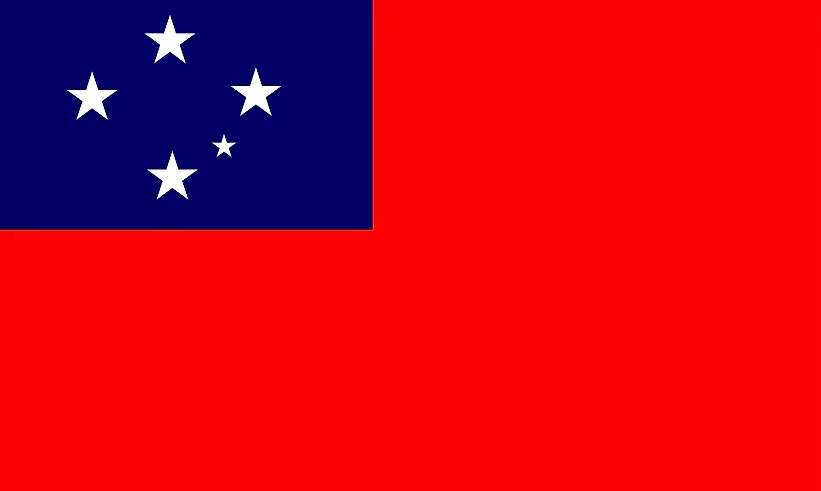
サモア
| 大陸 | オセアニア |
| 資本金 | アピア |
| 人口 | 198,926 |
| GDP | $1.05 億ドル |
| 一人当たりGDP | $5,400 |
| ダイヤルコード | +685 |
| ISOコード(2文字) | WS |
| ISOコード(3文字) | WSM |
サモアについて
ポリネシア文化の精神を体現する国、サモアへようこそ。人口約20万人、面積2,842平方キロメートルのサモアは、手つかずの熱帯の風景と豊かな文化的伝統が融合し、太平洋の島々の暮らしの真髄を表現しています。
地理的特徴と自然の美しさ
サモアの地理は、2つの主要な島、サヴァイ島とウポル島、そしていくつかの小さな島にまたがっています。火山の起源は、緑豊かな熱帯雨林、滝、手つかずのビーチを特徴とするドラマチックな風景を作り出しました。
ト・スア海溝、火山クレーター、広大なサンゴ礁などの景観がある。熱帯性気候が多様な生態系とユニークな野生生物を育んでいる。
保護地域には、オ・ル・ププ・プエ国立公園や海洋保護区がある。サモアの環境保護への取り組みは、気候変動の課題に適応しながら、自然遺産を保護することに重点を置いている。
文化遺産と伝統
サモアの文化は、3,000年以上続く伝統的なライフスタイル「ファアサモア(サモア道)」が中心となっている。この国の遺産には、伝統的なタトゥー、ダンス、マタイ(酋長)制度などがある。
伝統芸能には、シアポ(タパ布作り)、木彫り、シヴァなどの伝統舞踊がある。文化的慣習としては、アヴァの儀式やファレ(伝統的な家屋)建築の伝統がある。
サモア料理は、地元の食材、特にタロイモ、ココナッツ、シーフードに重点を置いている。日曜日のトオナイ(家族の祝宴)の伝統は、今でも地域生活の中心となっている。
歴史の旅
サモアの歴史は、古代ポリネシア人の定住から植民地時代を経て独立に至る。1962年に太平洋の島国として初めて独立を果たした。
初期のポリネシア文明、ドイツの植民地化、ニュージーランドの統治、平和的なマウ族の独立運動などがその代表的な時代である。この国の強固な文化的アイデンティティは、このような変化の中でも存続してきた。
現代の経済状況
今日のサモア経済は、伝統的な慣行と近代的な発展のバランスを保っている。伝統的な共同体経済構造を維持しながら、農業、観光、送金を重視している。
最近のイニシアティブは、持続可能な観光開発、農産物の輸出、再生可能エネルギーの導入に重点を置いている。サモアの自然の美しさと文化の真正性は、成長する観光部門を支えている。
国際関係とグローバルポジション
サモアは気候変動対策を提唱しながら、太平洋地域組織に積極的に参加している。サモアの文化的影響力は、ディアスポラ(ディアスポラ居住者)・コミュニティを通じて拡大している。
ご存知でしたか?
- サモアは近代ポリネシアで最初の独立国家ですか?
- この国は2009年に道路を挟んで反対側を走ったことで有名だが?
- ロバート・ルイス・スティーブンソンは晩年をサモアで過ごし、そこに埋葬されている?
- サモアは太平洋諸国で初めて南太平洋競技大会を開催した国ですか?
結論
サモアは、ポリネシアの伝統文化と近代的な発展が融合したユニークな国です。火山景観から手つかずのビーチ、古くからの習慣から発展する経済まで、サモアは現代の課題に適応しながら、その文化的アイデンティティを守り続けています。気候変動や経済開発などの問題に取り組む中で、サモアは持続可能な進歩を受け入れながら、伝統的な価値観を維持することに尽力しています。





